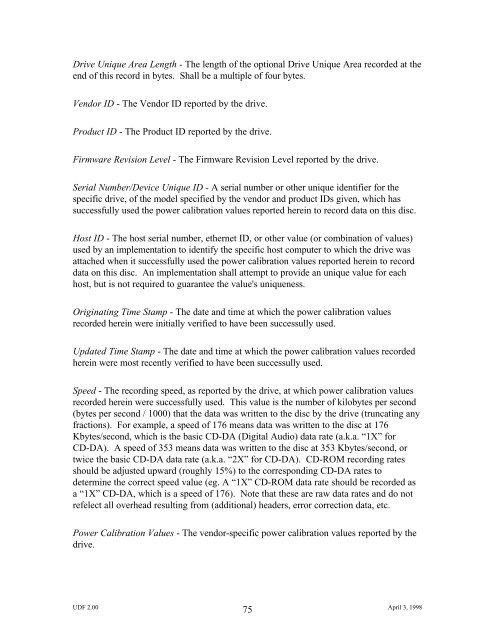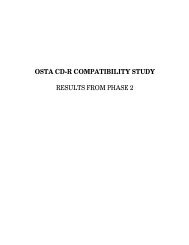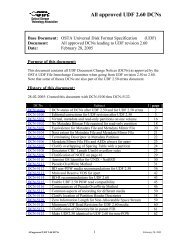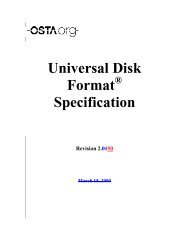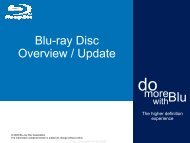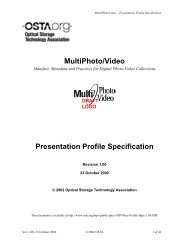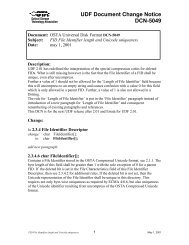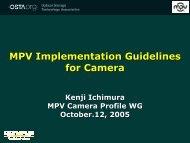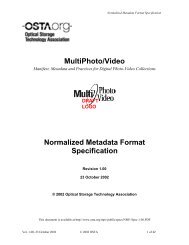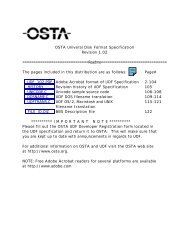UDF 2.00 - OSTA - Optical Storage Technology Association
UDF 2.00 - OSTA - Optical Storage Technology Association
UDF 2.00 - OSTA - Optical Storage Technology Association
You also want an ePaper? Increase the reach of your titles
YUMPU automatically turns print PDFs into web optimized ePapers that Google loves.
Drive Unique Area Length - The length of the optional Drive Unique Area recorded at the<br />
end of this record in bytes. Shall be a multiple of four bytes.<br />
Vendor ID - The Vendor ID reported by the drive.<br />
Product ID - The Product ID reported by the drive.<br />
Firmware Revision Level - The Firmware Revision Level reported by the drive.<br />
Serial Number/Device Unique ID - A serial number or other unique identifier for the<br />
specific drive, of the model specified by the vendor and product IDs given, which has<br />
successfully used the power calibration values reported herein to record data on this disc.<br />
Host ID - The host serial number, ethernet ID, or other value (or combination of values)<br />
used by an implementation to identify the specific host computer to which the drive was<br />
attached when it successfully used the power calibration values reported herein to record<br />
data on this disc. An implementation shall attempt to provide an unique value for each<br />
host, but is not required to guarantee the value's uniqueness.<br />
Originating Time Stamp - The date and time at which the power calibration values<br />
recorded herein were initially verified to have been successully used.<br />
Updated Time Stamp - The date and time at which the power calibration values recorded<br />
herein were most recently verified to have been successully used.<br />
Speed - The recording speed, as reported by the drive, at which power calibration values<br />
recorded herein were successfully used. This value is the number of kilobytes per second<br />
(bytes per second / 1000) that the data was written to the disc by the drive (truncating any<br />
fractions). For example, a speed of 176 means data was written to the disc at 176<br />
Kbytes/second, which is the basic CD-DA (Digital Audio) data rate (a.k.a. “1X” for<br />
CD-DA). A speed of 353 means data was written to the disc at 353 Kbytes/second, or<br />
twice the basic CD-DA data rate (a.k.a. “2X” for CD-DA). CD-ROM recording rates<br />
should be adjusted upward (roughly 15%) to the corresponding CD-DA rates to<br />
determine the correct speed value (eg. A “1X” CD-ROM data rate should be recorded as<br />
a “1X” CD-DA, which is a speed of 176). Note that these are raw data rates and do not<br />
refelect all overhead resulting from (additional) headers, error correction data, etc.<br />
Power Calibration Values - The vendor-specific power calibration values reported by the<br />
drive.<br />
<strong>UDF</strong> <strong>2.00</strong> April 3, 1998<br />
75


